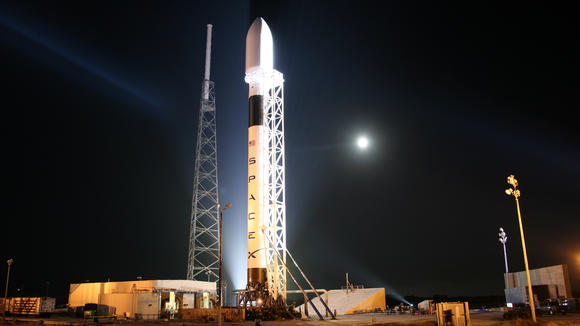SpaceX Dragon capsule docks at ISS, overcomes thruster anomalies
More privately built tech is launching into space in 2013

The SpaceX Dragon capsule docked with the International Space Station this weekend, overcoming anomalies in its thrusters and successfully delivering 2,300 pounds of cargo.
The thrusters glitch occurred shortly after liftoff on Friday, when SpaceX's Falcon 9 rocket delivered the Dragon spacecraft to its orbit.
"Issue with Dragon thruster pods, inhibiting three of four from initializing," tweeted SpaceX Founder Elon Musk. "About to command inhibit override."
The failed thrusters were later restored and orbit was corrected, but the anomalies delayed the Dragon capsule's planned rendezvoused with the robotic arm of the ISS from March 2 to March 3.
SpaceX Dragon payload for the ISS
Mission SpaceX CRS-2 is the second official NASA cargo resupply mission for the privately-funded Hawthorne, Calif. company.
"SpaceX is proud to execute this important work for NASA, and we're thrilled to bring this capability back to the United States," said President SpaceX Gwynne Shotwell in a press release.
"Today's launch continues SpaceX's long-term partnership with NASA to provide reliable, safe transport of cargo to and from the station, enabling beneficial research and advancements in technology and research."
Sign up for breaking news, reviews, opinion, top tech deals, and more.
While the SpaceX Dragon is unmanned, the crew of the astronauts of the ISS will spend the next 22 days unloading and loading its cargo before the spacecraft returns to Earth.
Wasting no time, Canadian astronauts aboard the ISS Chris Hadfield said the first half of the job involving the SpaceX capsule's payload is complete.
"Dragon has an empty belly!" tweeted Hadfield. "We completely unpacked the visiting spaceship today. Many new experiments for Space Station, plus some goodies."
The Dragon is scheduled to return to Earth with over 3,000 pounds of cargo, crashing down into the Pacific Ocean off the coast of Baja, Calif. on March 25.
Google Nexus One shares Space with Dragon
The SpaceX Dragon isn't the only piece of familiar tech in space right now.
In February, a team from the the University of Surrey launched a nanosatellite carrying a Google Nexus One smartphone into orbit.
Yes, Android devices have taken over a majority of Earth's marketshare, so Google's moible operating system is now venturing into space courtesy of the university and a small satellite company.
The STRaND-1 phonesat is being controlled by a high-speed Linux-based processor for attitude and orbital controls right now.
However, the team plans to switch over to the Nexus One in phase two of its space mission.
From privately funded large-scale operations like the SpaceX's Dragon to small school-backed projects like the Google Nexus One-powered miniature satellite, 2013 is going to be one small step for tech in space, one giant leap for roaming charges.
